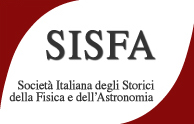Speaker
Description
The Whipple Museum of the History of Science in Cambridge holds a large collection of scientific devices intended to aid navigation at sea. Some of these are very well known—instruments like the sextant and the chronometer, both designed to help navigators calculate their position when out of sight of land. But many of these devices are more obscure. This talk will consider a range of these less well known instruments, and ponder why so much time and effort was put into their development. I will argue that the ‘longitude problem’ has a much longer history than is typically assumed, with inventors and instrument-makers still developing new and varied tools to help aid navigation a century-and-a-half after the longitude problem is supposed to have been ‘solved’. I will consider, in particular, a pair of portable analogue calculators designed in the 1880s and 1930s to solve problems of spherical trigonometry without the need for paper calculations. Studying these instruments, I argue, offers us a more complex picture of the realities of maritime life, in which fixing location was never easy and in which commercial interests remained focussed on ‘solving longitude’ long after the chronometer and sextant had become standard instruments of navigation at sea.

